2009 Porsche Boxster S with PDK – Click above for high-res image gallery
The Italian countryside passes by in a blur. At an indicated 265 km/h (164 mph), we have hit the invisible wall. The accelerator pedal has been jammed into the carpet for the last ten seconds, yet the sleek Porsche cannot push the molecules of air away any faster. Thanks to a stiff headwind, simple aerodynamic drag has overcome the 310 horsepower engine and arrested our acceleration a bit shy of Porsche's quoted maximum speed. Regardless of the blustery gusts, the direct-injected flat-six buried in the middle of the chassis continues to wail as it sustains the fight. An approaching curve on the horizon convinces us to reluctantly lift off the gas.
We're in Sicily testing the new second-generation 2009 Porsche Boxster S. Significantly updated for the new model year, the drop-top coupe continues to impress us. How has Porsche improved its 12-year-old platform? Are the new powerplants significantly different from their predecessors? How does the Boxster compare to the Cayman? Follow the jump to find out and take a tour of Italy with the Porsche Boxster in our high-res gallery of images below.
All photos Copyright © 2009 Michael C. Harley, Weblogs, Inc./ Porsche Cars North America
The stunning Porsche Boxster Concept debuted in 1993 at the Detroit Auto Show. A tribute to the 1950's-era Porsche 550 Spyder, the two-seat concept was a show-stopper and the Stuttgart-based automaker pushed it into production posthaste. The first model, known as the "Type 986," rolled into showrooms for the 1997 model year with a flat-six mid-mounted within the chassis. Displacing just 2.5-liters, the 201 hp engine was hidden deep within the bowels of the convertible chassis. A lightweight power-operated soft top with a plastic rear window closed out the elements yet allowed quick access to the open sky and with a curb weight under 3,000 pounds, Porsche's entry-level drop-top was a hoot to drive and handled amazingly well even if it wasn't the quickest at the stoplight.
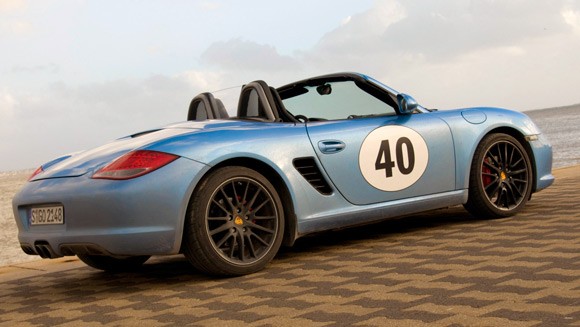
Over the next twelve years, Porsche would update the Boxster with more powerful engines, upgraded features and a well-deserved facelift. The first significant revision, a convincing reason for Porsche to label it an all-new Type 987, arrived in 2005. Four years later, the 2009 model represents another major upgrade. Instead of a new type number, the automaker simply refers to it as the "Type 987 second-generation." All told, the new model brings the total number of Boxster iterations to three over the years:
- 1997-2004 / Type 986 / 2.5-liter, 2.7-liter, or 3.2-liter flat-six with Tiptronic or five- or six-speed manual
- 2005-2008 / Type 987 (first-generation) / 2.7-liter, 3.2-liter, or 3.4-liter flat-six with Tiptronic or five- or six-speed manual
- 2009-Present / Type 987 (second-generation) / 2.9-liter or 3.4-liter flat-six with PDK or six-speed manual
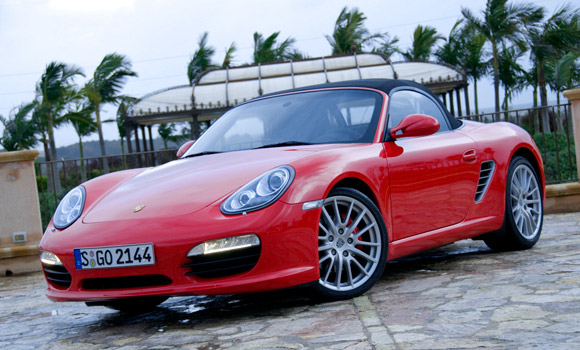
Compared to the 2008 Boxster lineup, the 2009 models gain a long list of standard enhancements that include new engines and exhaust systems, new transmissions, an updated suspension, bigger brakes, redesigned wheels, improved twin reflector xenon headlamps, a new LED configuration, revised brake lights, and a refresh for both the interior and exterior. Added to the base price (starting at about $46,600 for the Boxster model and $56,700 for the Boxster S) is an extensive options list. It now includes the new PDK (dual-clutch) transmission, Sport Chrono Plus, rear limited-slip differential, Porsche Ceramic Composite Brakes (PCCB), adaptive bi-xenon headlamps, seat ventilation, sport exhaust (check the box, trust us), heated steering wheel, satellite radio, upgraded audio, and a new 19-inch wheel choice. Of course, that is just the tip of the iceberg as Porsche will let you custom order just about anything you want on the 2009 model.
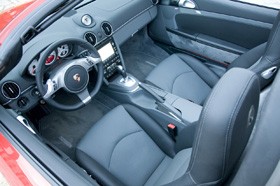
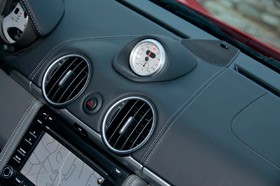
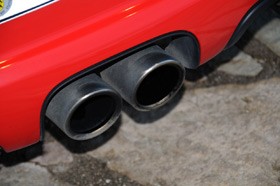
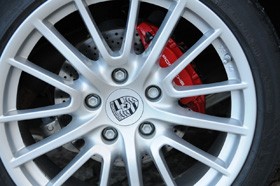
The creature comforts, accessories and cosmetic updates are welcomed, but the big news is found within the midship powerplant. Porsche introduced two all-new engines and dropped the Tiptronic automatic in favor of its excellent PDK transmission. Starting with the standard Boxster, the engine has been upgraded from a 2.7-liter flat-six to a 2.9-liter unit putting out 255 hp and 214 lb-ft of torque. With the standard six-speed manual, Porsche conservatively quotes a 0-60 time of 5.6 seconds and a top speed of 163 mph. With the seven-speed PDK, acceleration times drop to 5.3 seconds (EPA fuel economy ratings are 20/29 with PDK). The range-topping Boxster S benefits from a new 3.4-liter direct-injection flat-six rated at 310 hp and 266 lb-ft of torque. Mated to the standard six-speed manual gearbox, it sprints to 60 mph in five seconds flat towards an unrestricted top speed of 170 mph. The dual-clutch PDK drops the acceleration time to just 4.7 seconds thanks to its "launch control" mode. As a benefit of direct injection, the EPA fuel economy ratings of the more powerful 3.4-liter mirror those of the standard model at 20/29 (the 2.9-liter engine does not have direct injection).
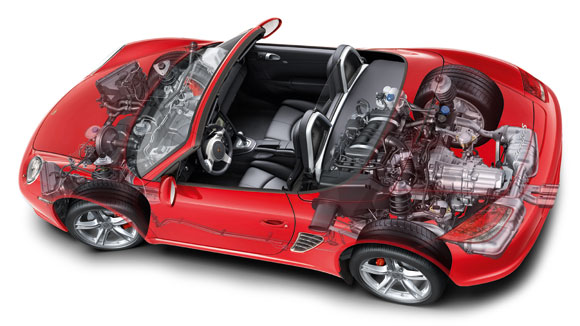
This is the second time we've been able to spend an extended period with the Porsche "Doppelkupplungsgetriebe" aka "PDK" (it simply means "double-clutch transmission" in German). Like all others, we continue to grow more enamored with the brilliant gearbox as every mile passes. Within the PDK's all-aluminum casing is a conventional seven-speed manual with two electronically-controlled clutch packs (there are technically two transmissions within the case, but we don't want to confuse the issue). As one clutch pack engages, the other disengages the previous gear and readies itself for the next shift. The driver is able to choose from several electronically-controlled shift modes ("Standard," "Sport," or "Sport Plus") to control how aggressive the gear changes occur. (Check out our First Drive: Porsche 911 Carrera PDK for a more detailed explanation.) The driver is able to choose between leaving the transmission in "Drive" and letting the computer do the work, or assume manual control with the console-mounted shift lever or steering wheel controls. As most will attest, the throwback-to-Tiptronic sliding steering wheel shifters are the weakest link. However, the shifts will come naturally, if not conveniently, after some familiarization (we suspect Porsche may offer a race-oriented paddle-like solution down the road with an optional steering wheel or two).
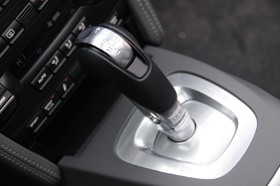
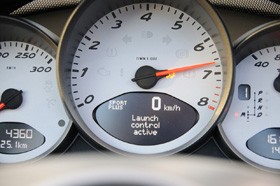
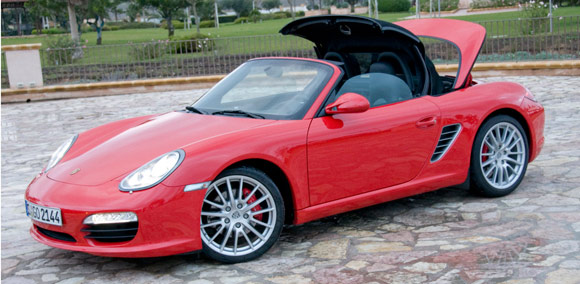
Refusing to follow the current trend of designing a roadster with a heavy and complicated retractable hardtop, Porsche continues to offer the Boxster with a power-operated soft top and a heated rear glass window. The automaker is quick to point out the weight advantage its magnesium-framed roof holds over the competition (faster acceleration, improved braking and a lower center of gravity). The insulated multi-layer top does an excellent job of keeping the noise and elements outside, regardless of the weather conditions. Our time in Sicily was fraught with unseasonably poor weather. The wind howled and the rain poured down intermittently in buckets. The roads were filled with debris, mud and deep puddles. Thankfully, the sun would peek through the clouds occasionally and quickly dry the roads as we traveled to other locales on the island. No need to be standing still to change the vehicle configuration, as the top on the Boxster opens/closes while the vehicle is moving at slow city speeds. Something we took advantage of several times.
Our test car was equipped with PASM (active suspension) and the Sport Chrono Package Plus, which includes a dash-mounted chronograph stopwatch, launch control capabilities and more aggressive PDK mapping. With those options, there are three buttons located on the bottom of the center console: SPORT, SPORT PLUS and SUSPENSION (that last one is actually a pictograph of a shock absorber). Illuminating them in selective order changes the overall personality of the Boxster S from mild-mannered to moderately brutish.
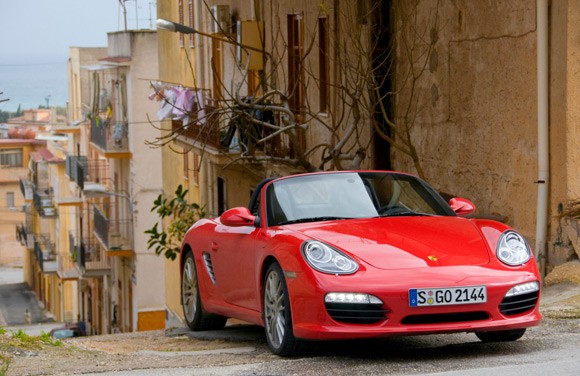
In default mode, all of the selections are off. The throttle response is lively, shifts smooth and the suspension is comfortably sporty. Activating the SPORT button alone does three things: quickens the throttle response, speeds up the shifting of the dual-clutch gearbox and activates the SUSPENSION button telling the PASM to significantly firm up the ride. This is a great mode for spirited driving, carving canyons or running like an outlaw. The hard-core SPORT PLUS mode is best left for track use or by road-going masochists. In this mode, the SUSPENSION button is again automatically set to firm, and the PDK is mapped for aggressive, semi-violent shifts (there is virtually no loss of power to the wheels between shifts). In Sport mode, the suspension can be a bit rough over broken pavement. Thankfully, Porsche allows the SUSPENSION button to be deactivated while retaining the SPORT or SPORT PLUS modes, giving comfort back to the ride part of the equation (even if the suspension is in standard mode, it will immediately firm if it calculates aggressive or emergency driving maneuvers). We messed with each of the settings over the countless kilometers we covered before finally choosing "SPORT on/ SUSPENSION off" as the best compromise for our roads.
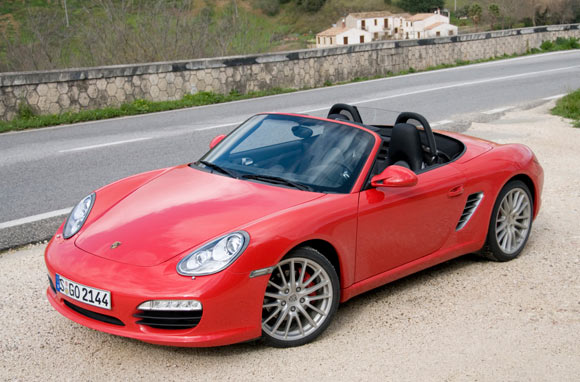
Our band of journalists were only the latest in a long string of invaders landing on the Italian shores of Sicily (its colored history includes rule by the Greeks, Byzantines, Arabs, and Spanish -- evidence of their existence abounds as one travels the island). Unlike most of our daring predecessors who attacked by sea, we were fortunate enough to arrive comfortably by air. Departing the airport at Palermo on the A29 motorway, we were pointed south for the smaller agricultural and fishing town of Mazara del Vallo. Never one to take the shortest path, we piloted our bright red roadster over a circuitous route along the western part of the region. We explored the coastline, tiptoed through small villages, climbed mountain passes and cruised at high speeds on the "Autostradas."
More than coincidentally, we find ourselves on these shores because many of these roads hosted the first historical Targa Florio in Sicily in 1906. That race ran 148 kilometers (92 miles) through the Sicilian Madonie Region. With its countless hills and more than 6,000 corners, the race was considered one of the greatest challenges in motorsports. A car built by Ferdinand Porsche, the Austro Daimler Sascha, entered the Targa Florio in 1922 and brought home first and second place. Over the next 50 years, Porsche would bring home overall Targa Florio victories in such famed cars as the 550 A Spyder, 904 Carrera GTS, Porsche 908 and Porsche 911 Carrera RSR.
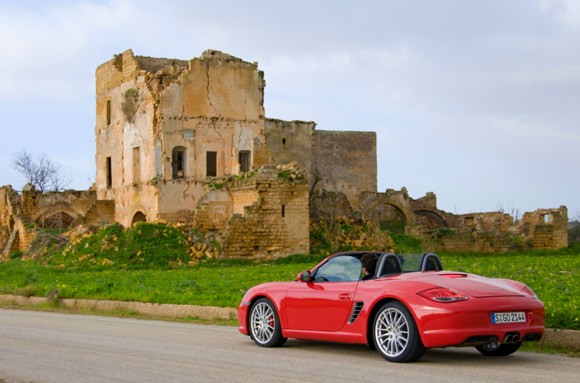
Having experienced the Porsche Cayman S recently, and understanding the near-twin relationship between the siblings that share nearly all of the same mechanical underpinnings, we had very high expectations from the two-seat Boxster S. As anticipated, and in typical Porsche manner, the Boxster gives almost nothing up to its fixed-roof brother. They benefit from the same massive cross-drilled brakes (upgraded to be identical on the Boxster and Boxster S this year), the same suspension and the same wheel/tire package (staggered, with 265/40-18s in the rear). While there is no denying the additional rigidity in the Cayman (reportedly double), the weight difference is but a mere eleven pounds – impossible to discern without a digital scale. Top up or down, tossing the Boxster into corners reveals an eager chassis that feels perfectly balanced. Even with Porsche Stability Management (PSM) activated, the mid-engine roadster begs to be driven harder and harder. Wet patches of asphalt step the rear wheels out mid-corner and naturally corrections bring things back into line with minimal steering inputs. Throttle, tap the brakes, turn, throttle, tap the brakes, turn, throttle, tap the brakes and repeat again and again.
The curvature of the road mimics a music score and the engine sings in unison. Manual control of the PDK allows perfect rev-matching during corner entry and high power torque-laden exits. When shifting is left to the countless algorithms buried within the transmission's brain, it is extraordinarily accurate in its gear selection, with throaty downshifts on brake application and long runs to redline after the apex. In an experience that is trying to define, the Boxster S never seems to break a sweat.
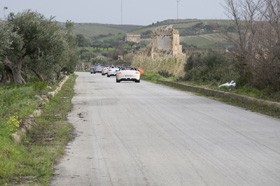
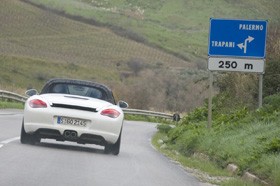
Top raised and latched tightly to avoid the buffeting headwinds, we make our way to the Italian Autostrada for some double-time. The aerodynamic Boxster S (with a drag coefficient of .29) presents a small profile to the wind as we hold a commanding position in the left lane. Save for a few very old Fiat Pandas crawling down the road, the pavement is nearly desolate. If the locals were to vacate their places of worship this particular Sunday afternoon, they would agree with us that piloting a Porsche at the posted speed limit of 120 km/h (about 75 mph) is a cardinal sin. Embolden with their assumed unspoken approval (never wanting to upset the Sicilians), we bury the throttle. The PDK downshifts instantly and the speedometer climbs like the steam off a fresh plate of cheese tortellini. The demeanor of the Boxster at triple-digit speeds eases our minds as the vortices of air swirl loudly behind the exterior mirrors. Less than half-a-minute later, we hit the aerodynamic wall. Pleased, and mission accomplished, it is time to slow down and cruise back to the hotel to enjoy the local cuisine and ponder our thoughts.
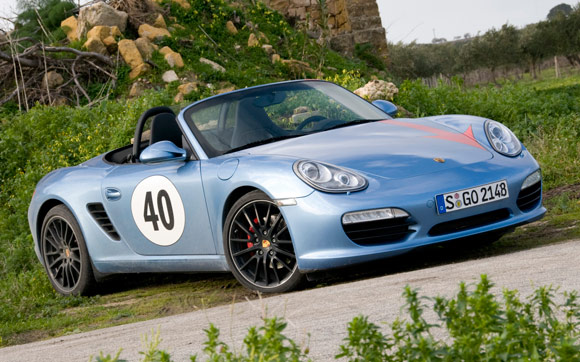
To understand and enjoy the new 2009 Porsche Boxster without uncorking it and spending time behind the wheel would be like trying to savor a bottle of fine wine by holding it up to the light. It's not enough to read an article, see the car passing from the curb, or weigh the published specifications and price. The Boxster is validated by the snarl of its eager flat-six, the balance of its mid-engine chassis, the communication transmitted through its steering column, and the power of its unfaltering brakes. Seat time in the Porsche Boxster S, like indulging in rare Italian vintage, is wholly intoxicating and entirely justifiable regardless of the tab.
All photos Copyright © 2009 Michael C. Harley, Weblogs, Inc./ Porsche Cars North America
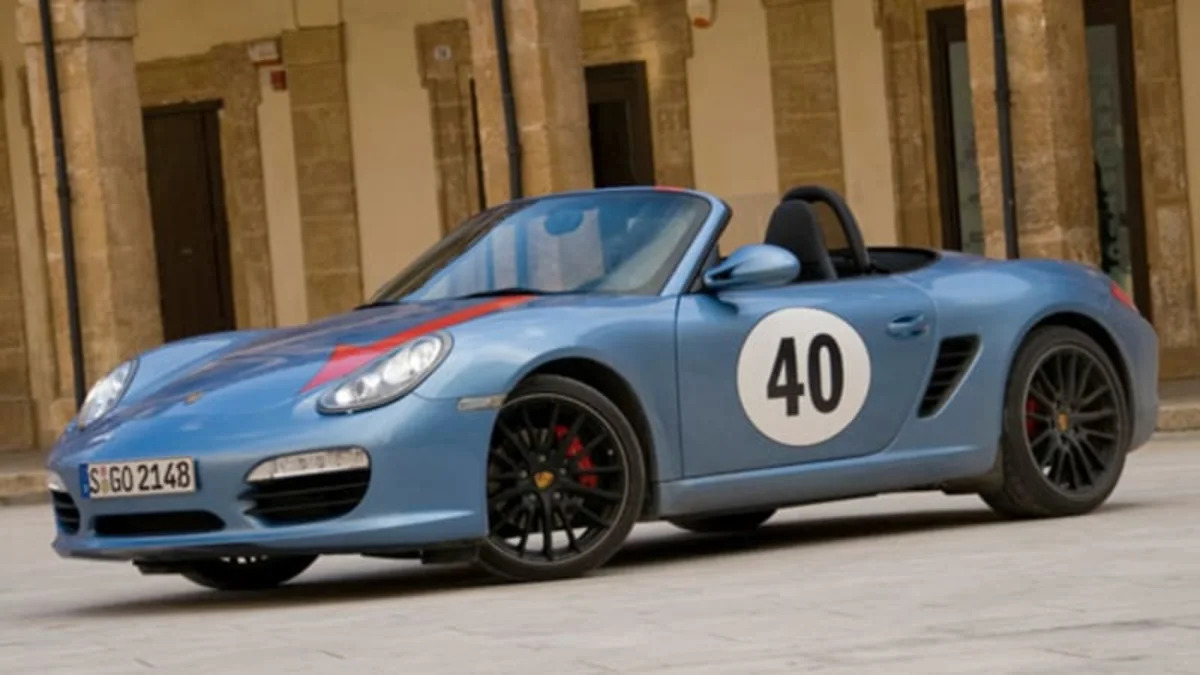
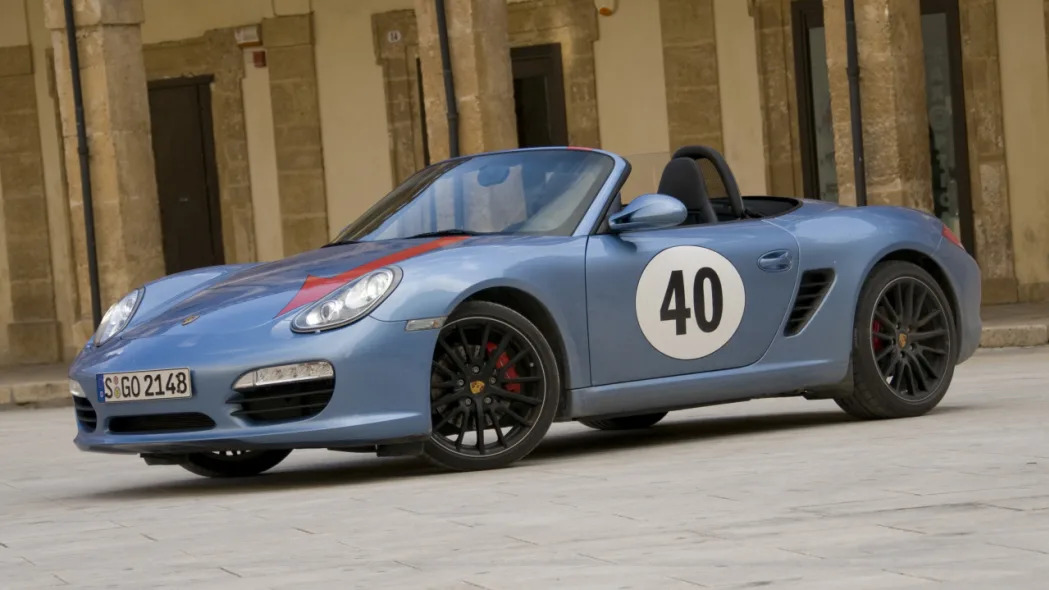

Sign in to post
Please sign in to leave a comment.
Continue